As speculation grows about the future of A380 amid reports Airbus is preparing to end the program, this week’s Throwback Thursday comes from the October 2008 edition of Australian Aviation, where Geoffrey Thomas writes about Emirates introducing the aircraft into service.
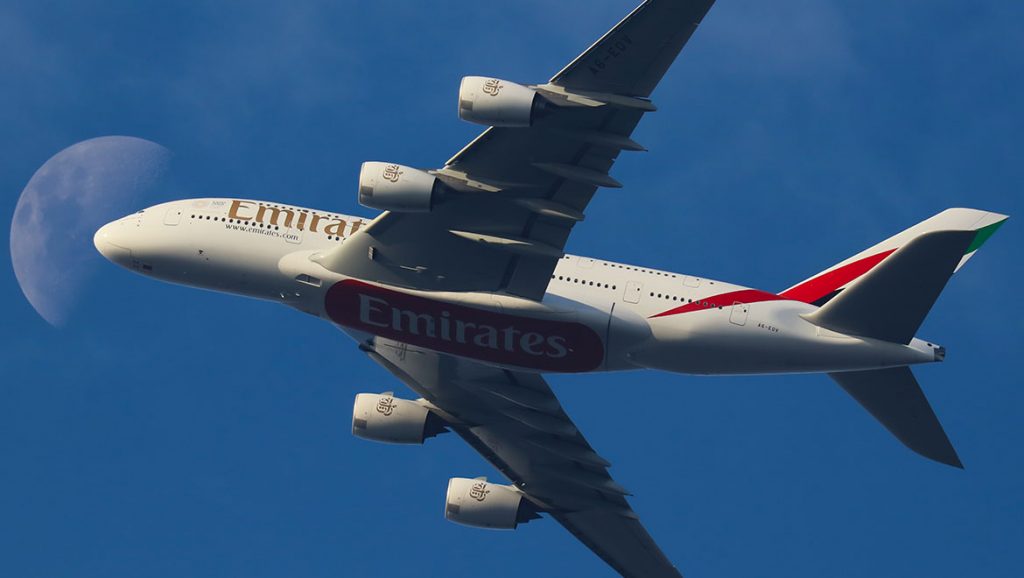
“We’re learning a lot about this aeroplane, it has the makings of something really special and it’s only going to get better,” said Emirates president Tim Clark onboard his airline’s first A380 service – from Dubai to New York – on August 1.
Upbeat was the best way to describe Clark, cabin crew and passengers alike on the first commercial flight of Emirates’s first A380. Clark was all smiles that the first A380 was a tonne lighter than expected, on board staff were beaming with pride with their new product offering – much of which they had helped design or implement, and passengers waxed lyrical about the host of new features including a bar and a tail mounted camera.
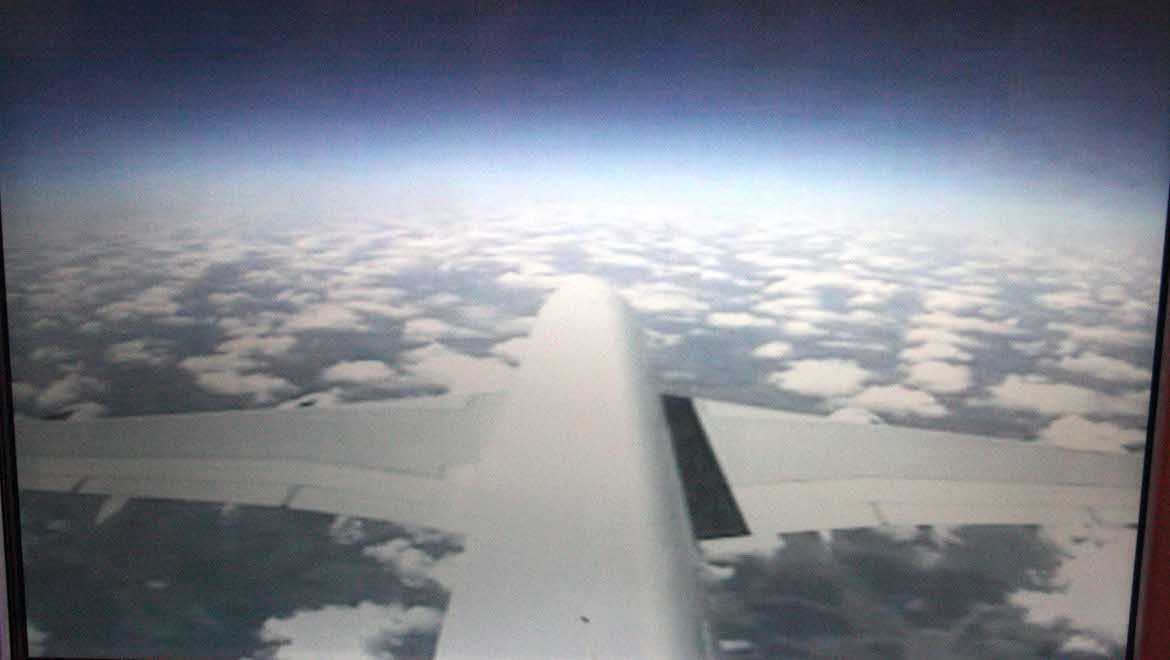
Emirates had wasted no time in getting its first Engine Alliance powered A380 into service after taking delivery of A6-EDA on July 29 at Airbus’s new Jürgen Thomas A380 Delivery Centre in Hamburg. But underscoring the challenge for Airbus in correcting wiring issues, the aircraft that Emirates took delivery of was MSN011, which first flew nearly 12 months earlier on September 4 2007.
VIDEO: The official delivery ceremony for Emirates’ first A380 in July 2008 from the Airbus YouTube channel.
Emirates became the second airline to launch A380 services, and became the first to operate the aircraft to the USA and the first to operate the aircraft with some of the gee-whiz features so often promised by Airbus.
With a full load of 490 passengers, flight EK3801 departed Dubai six minutes late at 1106 but arrived into New York 15 minutes early at 1630, and like the first commercial flight of the Singapore Airlines A380, passengers were impressed by the quiet and smooth ride.
The A380’s takeoff weight was 546 tonnes and the takeoff roll was 58 seconds. Flight time for the 6201nm (11,490km) trip was 13 hours 10 minutes, with the A380 turning heads in New York with thousands lining vantage points to witness the arrival.
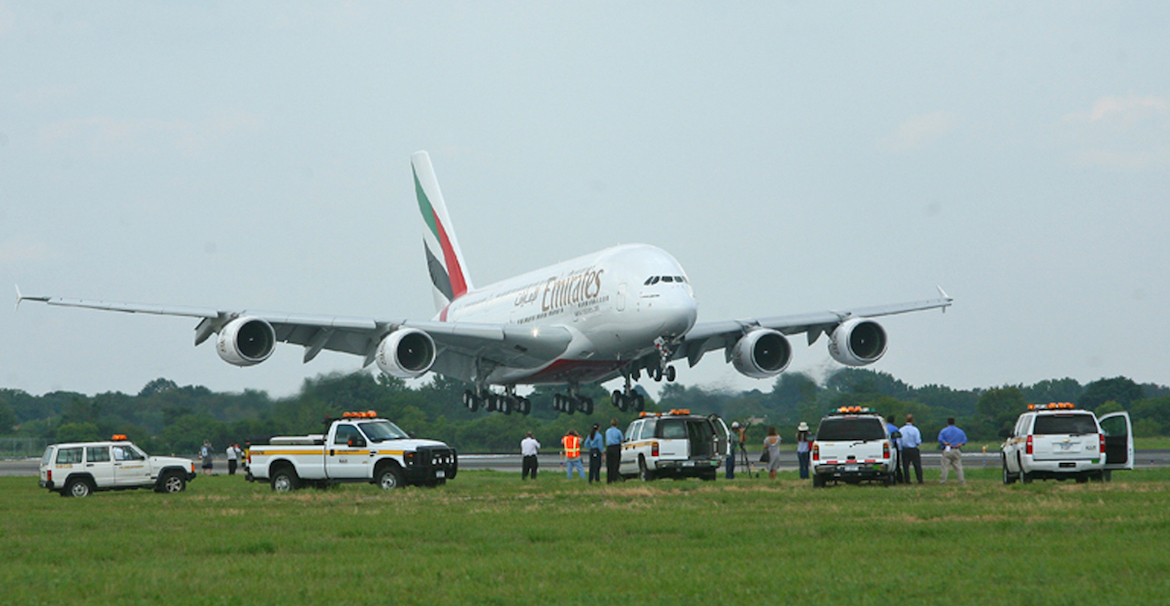
Airlines too will want to take a closer look at the A380, Clark confidently predicts, with the forecast of another four tonnes of weight to be taken out of the design by both Airbus and Emirates itself.
Airbus engineers predict they can eliminate up to two tonnes of weight out of the A380 in a stepped weight reduction program to 2012, while the initial aircraft is one tonne lighter than anticipated.
“This will give the A380 two hours more endurance from today’s 13 to 13.5 hours,” says Clark.
“By 2012 the A380 will be able to reach San Francisco from Dubai with maximum passengers (490) and some cargo. LA would be possible with 400 passengers.”
Emirates is also working on achieving a 1.5 to two tonne reduction in weight, examining every option including galleys, seats, carpets and onboard literature.
Clark cites the economy seats as an example. “Our Airbus A340-500 economy seats weigh 29.5kg and the weight of the seat downstairs [economy] in the A380 is 18.5kg and we are targeting 14.5kg, fully dressed, on the next generation of seats.”
The airline has also grabbed headlines with its paperless aircraft concept with a plan to reduce literature on the A380 by loading magazines into its ICE entertainment system. The latest version of ICE has a bigger and sharper wide-screen in all classes to enhance readability of the text.
But Clark notes that it is not quite true that he intends to make the A380 totally paperless. “We will load the duty-free and other inflight publications into the system, reducing the weight from 1.8kg to 0.6kg per seat.” Safety cards and other essential material makes up the 0.6kg.
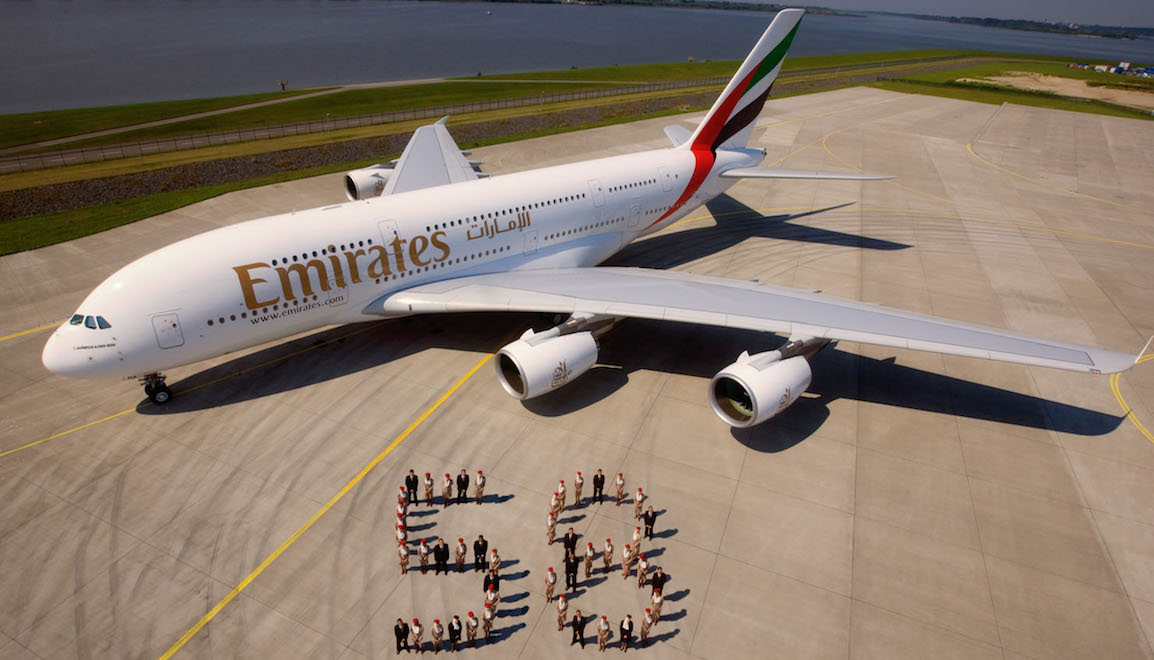
One innovation that bucks the weight reduction push is Emirates’s unique first class showers. The airline had proven the concept of recycling water through purification filters and ultraviolet radiation but regulators gave the thumbs down on health grounds. Emirates was forced to carry about 25 per cent more water – another 500 litres – to cater for the five minute showers of the up to 14 first-class passengers.
Emirates plans three configurations for the A380, with the initial aircraft having a 14-seat first class, 76-seat business class on the upper deck and a 399-seat economy class for 489 seats in total. The airline plans to re-configure the initial – overweight – A380s into medium-range configurations of 517 seats in three classes or its two-class 604 layout. Clark says this will allow the airline to use the lightest aircraft for its 489-passenger long haul services.
Emirates will receive five A380s by March 31 and hopes to have all 58 by 2013. The first five 489-seat aircraft are being deployed to New York JFK from August 8, London Heathrow from December and Sydney and Auckland from February 2009.
The airline is operating the A380 three times weekly to New York until October when the delivery of the second aircraft will allow the service to move to a daily frequency.
VIDEO: Some scenes from Emirates’ inaugural A380 service from Shaun Sullivan’s YouTube channel.
The next two A380s will then see the aircraft operating the 0800 departure from Dubai to Heathrow, returning at 1300.
Clark says that the “initial five aircraft will enable the airline to operate New York, Heathrow and Sydney/Auckland once a day.”
Perth, Melbourne and Brisbane will also see the A380 in Emirates colours says Clark, although he is coy on dates.
“We have quite a wait until further aircraft arrive. We will then add new destinations [as the market dictates],” Clark says.
The September 2009 delivery aircraft “will be 517-seat models,” says Clark.
The airline’s approach for the long range 489-seat configuration is quite different to that of Singapore Airlines. Emirates has resisted SQ’s ‘double beds’ and stayed with its first class suites which still offer passengers plenty of room and the privacy of a closed door suite – which Emirates pioneered.
In business class Emirates features a magnificent onboard lounge with bar at the rear of the upper deck, which is also available to first class passengers. The aim, says Clark, was to give passengers “their own executive club.”
The lounge has a flight attendant behind the bar serving drinks and a huge TV screen on the wall showing views from the aircraft’s onboard cameras and the moving map.
On the first commercial flight the bar was full for most of the flight, although perhaps some of that can be attributed to the party atmosphere on board the flight.
Clark said Emirates used its own in-house creative team to develop a master plan for the aircraft and added the services of well known French designer Jack Pierre Jean. “We did most of it ourselves and briefed Jack Pierre Jean and he created most of the finishes and materials in the suites and showers.” The overall effect is futuristic with soft pleasing colours.
The business class (upper deck) has 76 lie-flat beds in a 2-4-2 configuration with a seat pitch 39 and 48in (99 and 122cm) that extend to form 70-79in (178-201cm) fully flat beds. The seat is housed in a shell with built-in amenities such as a mini bar, privacy panel, large personal table and separate footrest extension and laptop stowage.
It also includes a touch screen wireless integrated passenger seat controller for controlling entertainment features, a 43cm wide LCD screen that uses Emirates’s ICE system, and dual USB ports in each seat.
The novel 2-4-2 seating configuration in business class is effectively 1-2-1 from an access point of view with all seats having direct access to the aisle. The layout perhaps can be termed a dovetail concept, which alternates the centre seating from two outboard seats and in the next row the centre seats are inboard and much closer together – perfect for couples.
In economy class on the main deck, there are 399 seats in a 3-4-3 configuration. The seats are pitched 32-33in (81-84cm) apart and recline 15cm. Each seat has an individual 27cm screen linked to the ICE system and there is power to every second economy seat. A USB port allows passengers to view videos and pictures from laptops or portable devices.
Emirates has continued with its outside camera views and added a tail view looking forward and down on the aircraft. It is spectacular and well worth a look.
The sense of spaciousness on the A380 from the use of mood lighting and light coloured fabrics on the seats is significant. The colour palette is a soothing mix of pastel shades of mauve, ochre and sage.
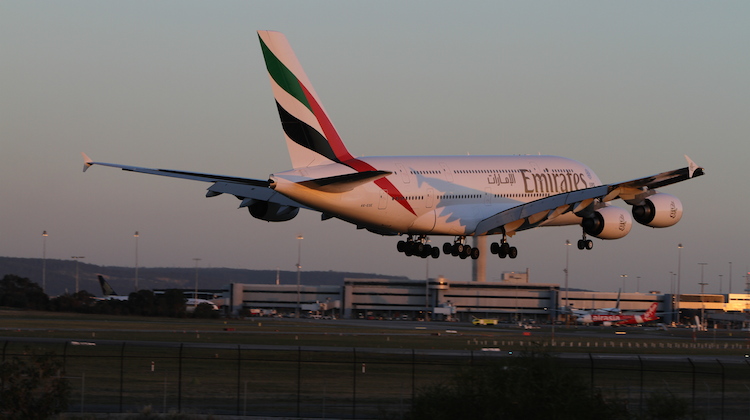
Emirates’s love affair with the A380 started on April 30 2000 when it announced a commitment for five passenger models and two freighters, interestingly a near identical commitment forecast by McDonnell Douglas when it listed Emirates amongst 12 launch customers for the MD-12 double-decker super jumbo in the early 1990s.
The order for seven was firmed up on November 4 2001 when the airline also added another 15 passenger models to the order. Then at the Paris Airshow on June 16 2003, Emirates turned the aviation world on its head with an order for a further 21 A380s.
In May 2006 the airline converted its two freighter orders to passenger models and a year later on May 7 2007 Emirates added an additional four A380s to its order book, then another eight at the Paris Airshow in June 2007, and a further three at the Dubai Airshow later in the year for a total of 58.
But despite such a massive A380 commitment and being upbeat on the A380’s performance growth prospects, Clark is leaving the door open for the 747-8I, which he termed an “excellent aircraft.”
Clark told Australian Aviation on the flight to New York that Boeing is working on innovations for the -8I to meet Emirates’s performance requirements. “We are still looking at the 747-8I and a lot depends on our expansion plans relating to the completion of Al-Maktoum International Airport at Jebel Ali in Dubai.”
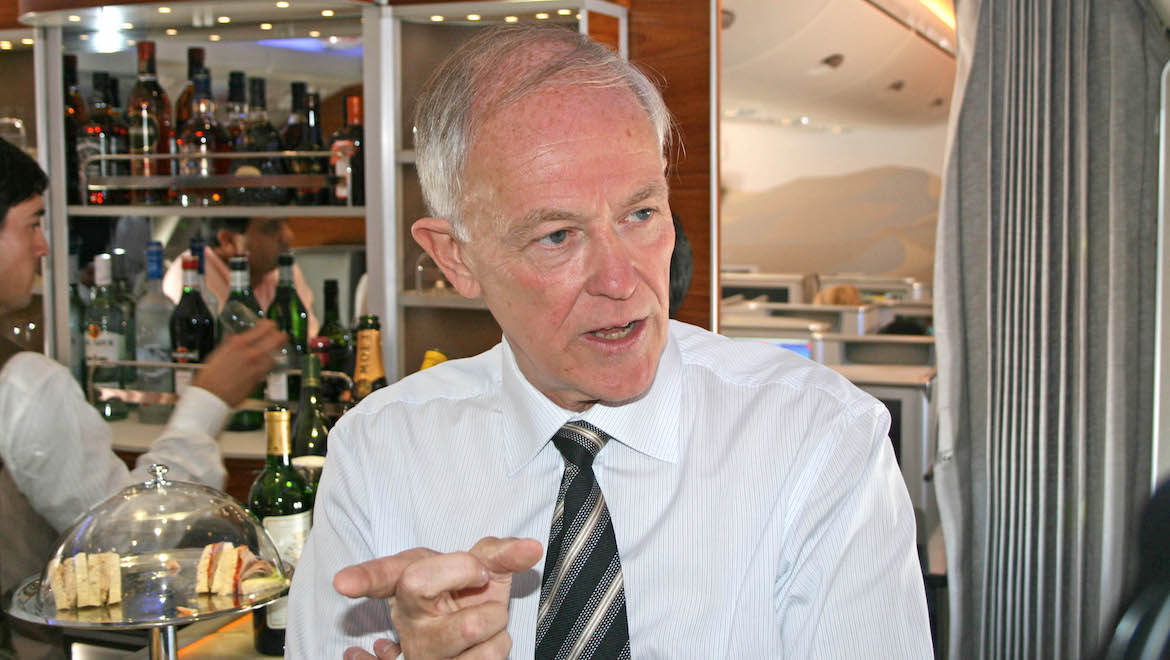
Once the six-runway airport with capacity for 120 million passengers per year is completed, restrictions on the airline’s expansion will disappear. “If that airport opens as planned, the 747-8I is [still] in contention.”
Boeing has been working with Emirates for an order for the passenger version of the 747-8 ever since it placed an order for up to 20 freighter versions at the 2006 Farnborough Airshow after canceling A380Fs.
However, Boeing’s decision to increase the length of the Intercontinental model to that of the -8F for commonality and to meet demands for higher passenger count made Dubai-US West Coast performance marginal.
For now though the focus remains on introducing the A380, and with the first A380’s delivery Emirates’s fleet now numbers 117, which includes 10 freighters, with the fleet average age of just 67 months. The fleet will double in size by 2012 at a rate of about 20 aircraft a year and there are 180 aircraft outstanding worth US$61 billion.
And while the A380 will ease the airline’s capacity problems the hike in oil prices is forcing a rethink on the direction of that growth.
“We are revisiting our network to optimise on profitability,” says Clark. The airline is looking at upping capacity on better performing routes and reducing capacity through aircraft changes or frequency on weaker routes.
The airline is also deferring some destinations such as Durban in South Africa but will press ahead with San Francisco and Los Angeles services later this year with 777-300ERs. It’s also examining Washington, DC, Seattle and Atlanta as well as Calgary in Canada as new destinations in North America to add to New York, Toronto and Houston.
And there seems little doubt that the A380’s sales fortunes will depend on the success of its operations with Emirates. The airline is one of the world’s fastest growing and innovative and also one of the most demanding.
If the enthusiasm of the Emirates staff and passengers on its first A380 flight is any guide then the A380 may well become a flagship of which the airline will be proud.
VIDEO: An August 2018 video from the Emirates YouTube channel celebrating 10 years of A380 operations at the airline.
This story first appeared in the October 2008 edition of Australian Aviation. To read more stories like this, subscribe here.










